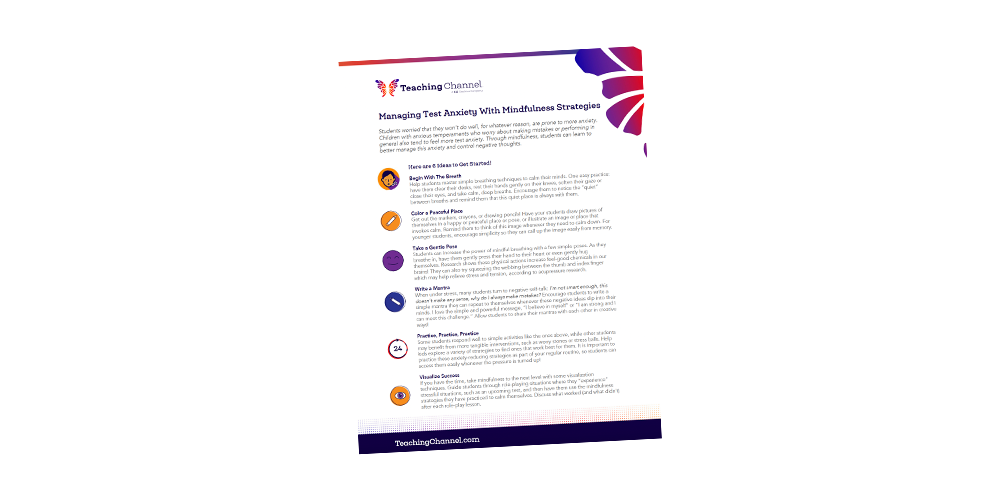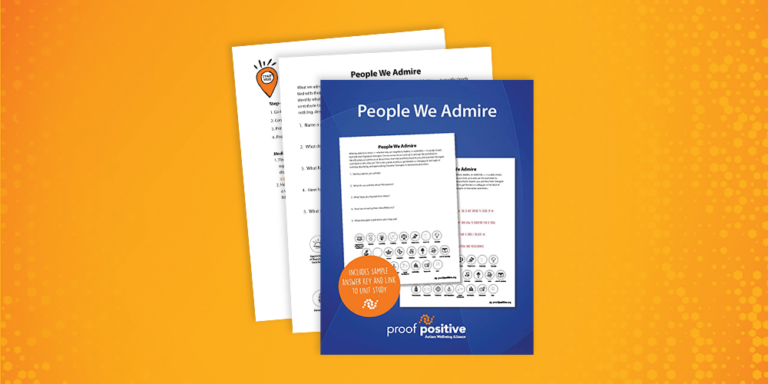Students who are worried they won’t do well, for any reason, are prone to more anxiety. Children with anxious temperaments who worry about making mistakes or performing in general also tend to feel more test anxiety. Through mindfulness, students can learn to manage this anxiety and control negative thoughts.

Here are 6 Ideas to Get Started!
1. Begin With the Breath
Help students master simple breathing techniques to calm their minds. One easy practice: have them clear their desks, rest their hands gently on their knees, soften their gaze or close their eyes, and take calm, deep breaths. Encourage them to notice the “quiet” between breaths and remind them that this quiet place is always with them.
2. Color a Peaceful Place
Get out the markers, crayons, or drawing pencils! Have your students draw pictures of themselves in a happy or peaceful place or pose, or illustrate an image or place that invokes calm. Remind them to think of this image whenever they need to calm down. For younger students, encourage simplicity so they can call up the image easily from memory.
3. Take a Gentle Pose
Students can increase the power of mindful breathing with a few simple poses. As they breathe in, have them gently press their hand to their heart or even gently hug themselves. Research shows these physical actions increase feel-good chemicals in our brains! They can also try squeezing the webbing between the thumb and index finger which may help relieve stress and tension, according to acupressure research.
4. Write a Mantra
When under stress, many students turn to negative self-talk: I’m not smart enough, this doesn’t make any sense, why do I always make mistakes? Encourage students to write a simple mantra they can repeat to themselves whenever these negative ideas slip into their minds. I love the simple and powerful message, “I believe in myself” or “I am strong and I can meet this challenge.” Allow students to share their mantras with each other in creative ways!
5. Practice, Practice, Practice
Some students respond well to simple activities like the ones above, while other students may benefit from more tangible interventions, such as worry stones or stress balls. Help kids explore a variety of strategies to find ones that work best for them. It is important to practice these anxiety-reducing strategies as part of your regular routine, so students can access them easily whenever the pressure is turned up!
6. Visualize Success
If you have the time, take mindfulness to the next level with some visualization techniques. Guide students through role-playing situations where they “experience” stressful situations, such as an upcoming test, and then have them use the mindfulness strategies they have practiced to calm themselves. Discuss what worked (and what didn’t) after each role-play lesson.







